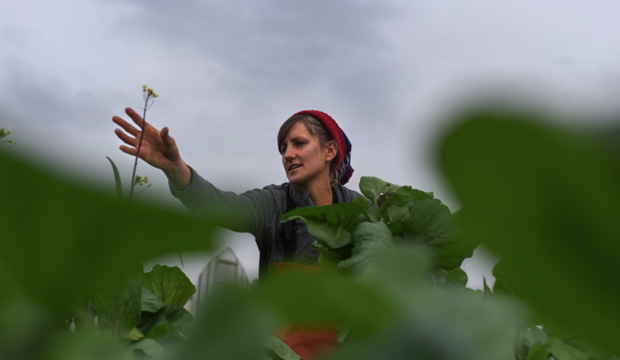Liz Whitehurst dabbled in several careers before she ended up here, crating fistfuls of fresh-cut arugula in the early-November chill.
The hours were better at her nonprofit jobs. So were the benefits. But two years ago, the 32-year-old Whitehurst – who graduated from a liberal arts college and grew up in the Chicago suburbs – abandoned Washington, D.C., for this three-acre farm in Upper Marlboro, Maryland.
She joined a growing movement of highly educated, ex-urban, first-time farmers who are capitalizing on booming consumer demand for local and sustainable foods and, experts say, could have a broad impact on the food system.
For only the second time in the last century, the number of farmers under 35 years old is increasing, according to the U.S. Department of Agriculture’s latest Census of Agriculture.
This new generation can’t hope to replace the numbers that farming is losing to age. But it is already contributing to the growth of the local-food movement and could help preserve the place of midsize farms in the rural landscape.
“We’re going to see a sea change in American agriculture as the next generation gets on the land,” said Kathleen Merrigan, the head of the Food Institute at George Washington University and a deputy secretary at the USDA under President Barack Obama. “The only question is whether they’ll get on the land, given the challenges.”
The number of farmers age 25 to 34 grew 2.2 percent between 2007 and 2012,according to the 2014 USDA census,a period when other groups of farmers – save the oldest – shrunk by double digits. In some states, such as California, Nebraska and South Dakota, the number of beginning farmers has grown by 20 percent or more.
A survey conducted by Merrigan for the National Young Farmers Coalition, an advocacy group, shows that the majority of young farmers did not grow up in agricultural families.
They are also far more likely than the general farming population to grow organically, limit pesticide and fertilizer use, diversify their crops or animals, and be deeply involved in their local food systems via community supported agriculture (CSA) programs and farmers markets.
Today’s young farmers also tend to operate small farms of less than 50 acres, though that number increases with each successive year of experience.
Whitehurst bought her farm, Owl’s Nest, from a retiring farmer in 2015.
The farm sits at the end of a gravel road, a series of vegetable fields unfurling from a steep hill capped by her tiny white house. Like the farmer who worked this land before her, she leases the house and the fields from a neighboring couple in their 70s.
She grows organically certified peppers, cabbages, tomatoes and salad greens from baby kale to arugula, rotating her fields to enrich the soil and planting cover crops in the off-season.
On Tuesdays, Thursdays and Fridays, she and two longtime friends from Washington wake up in semi-darkness to harvest by hand, kneeling in the mud to cut handfuls of greens before the sun can wilt them. All three young women, who also live on the farm, make their living off the produce Whitehurst sells, whether to restaurants, through CSA shares or at a D.C. farmers market.
Finances can be tight. The women admit they’ve given up higher standards of living to farm.
“I wanted to have a positive impact, and that just felt very distant in my other jobs out of college,” Whitehurst said. “In farming, on the other hand, you make a difference. Your impact is immediate.”
Caitlin Dewey, Washington Post, November 24, 2017

